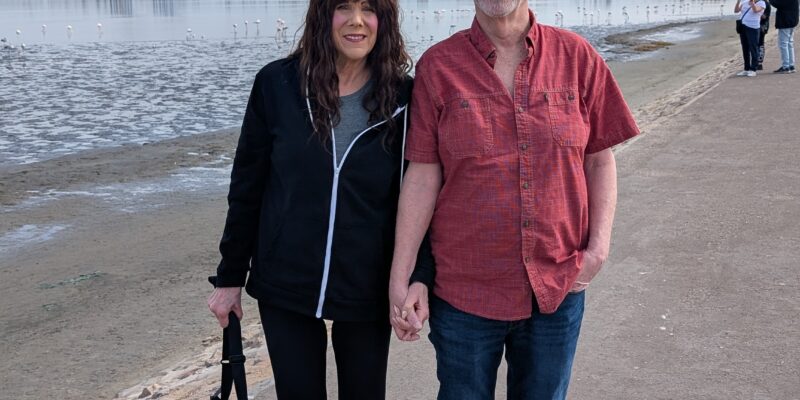
On Monday, as we stood at the edge of the Walvis Bay Lagoon, the air was still and heavy with the scent of salt and seaweed. The soft hush of the ocean was interrupted only by the distant calls of the flamingos, hundreds, perhaps thousands of them, dotting the shallow waters in every direction. It was one of those moments that silences conversation, when nature’s display is so extraordinary that words simply can’t compete.
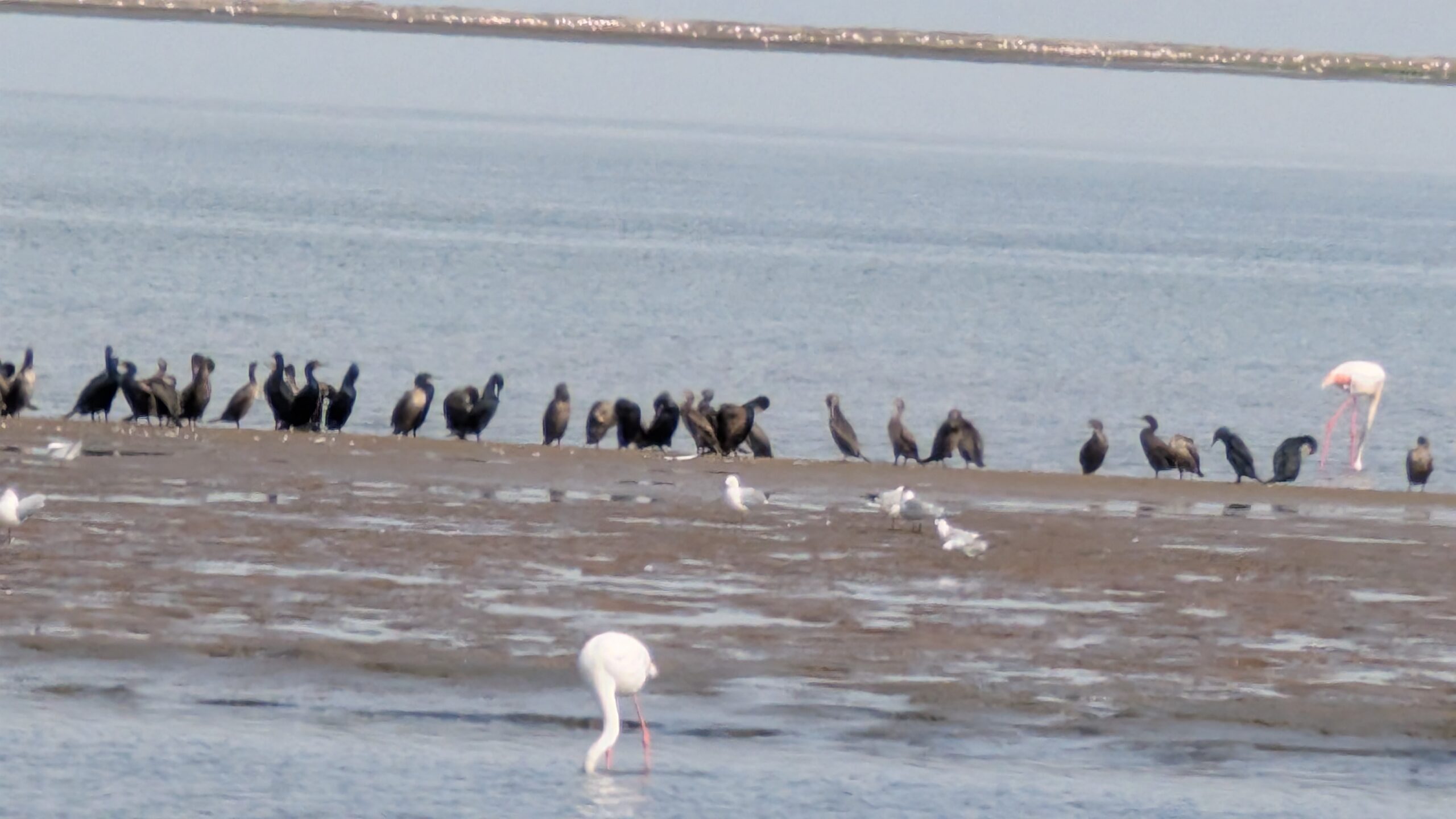
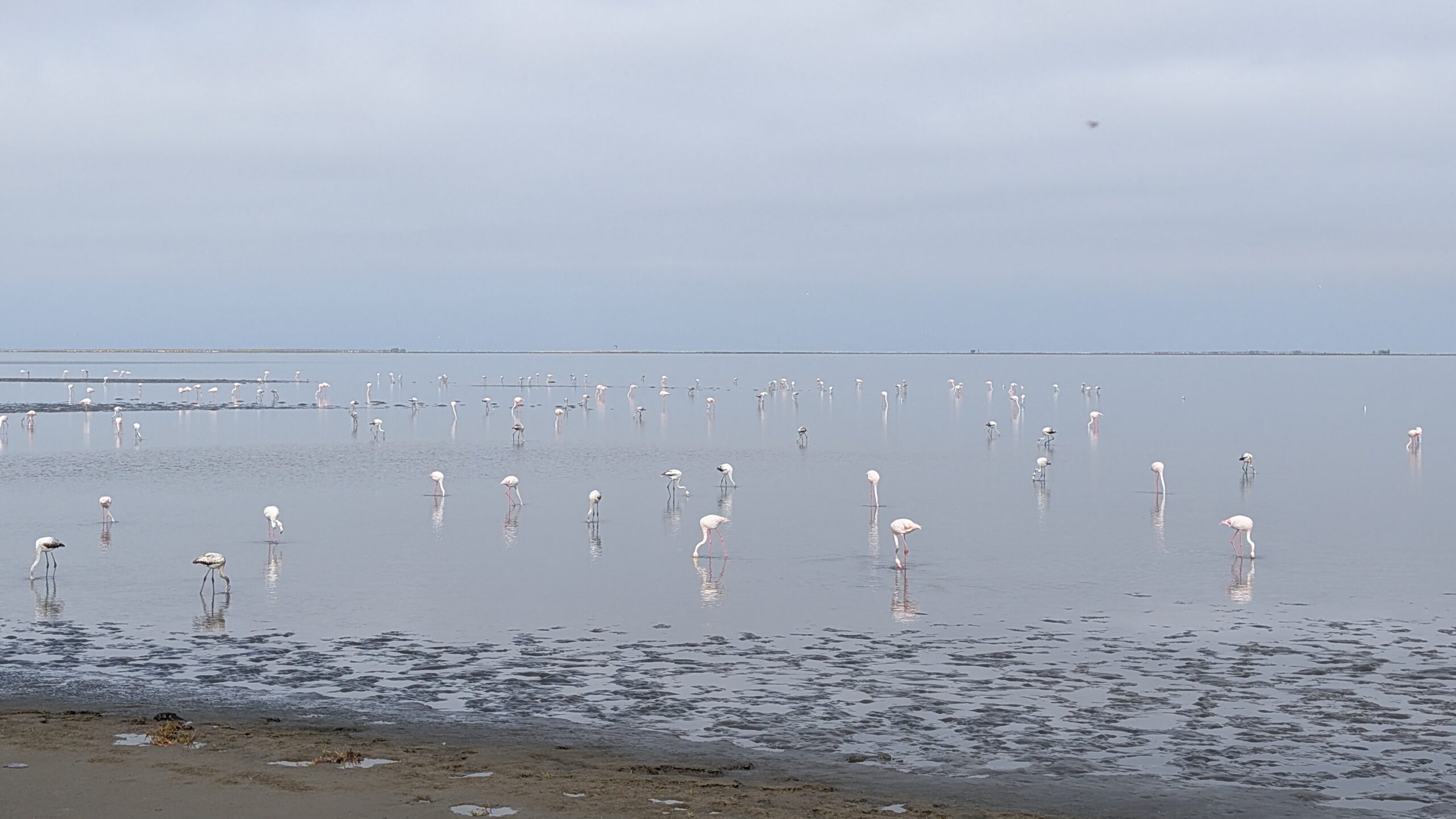
The flamingos here are an iconic feature of Walvis Bay, a living, breathing tapestry of pink and white across the blue-gray water. As the morning light shifted, their feathers glowed in varying shades of rose, blush, and coral, creating a scene almost too beautiful to seem real. Some stood still on one impossibly thin leg, heads tucked neatly beneath a wing, while others waded gracefully through the shallows, dipping their curved bills into the water to feed. It’s mesmerizing to watch their heads move back and forth as they filter tiny crustaceans and algae from the water, the very source of that radiant color.
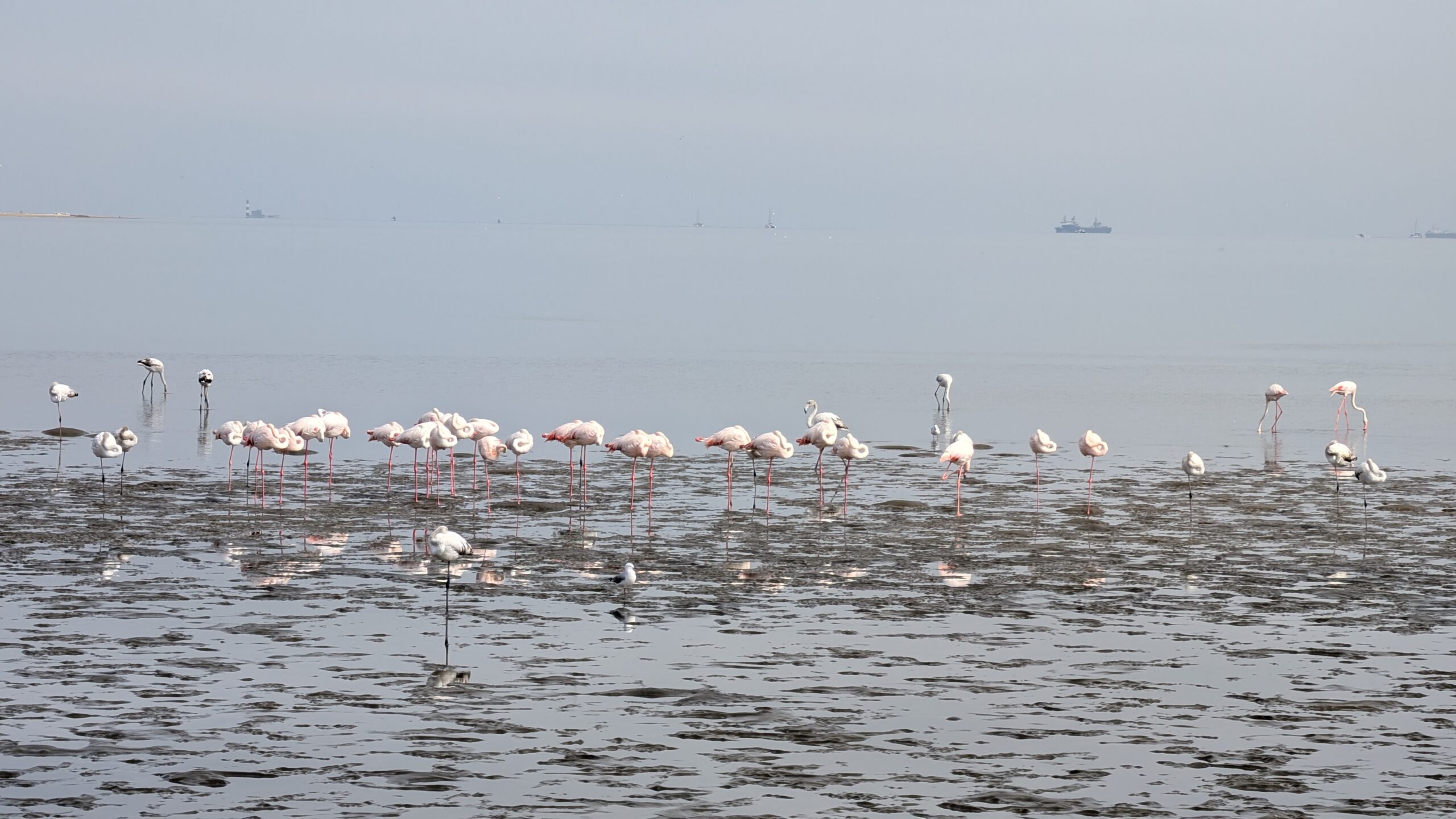
Flamingos are curious creatures. From a distance, they appear delicate, almost fragile, but up close, you realize they are strong and sturdy, built for balance and endurance. Their bright hues come not from birth but from diet, specifically the microscopic shrimp and plankton rich in beta-carotene that thrive in these mineral-laden waters. The salt pans and lagoons around Walvis Bay provide the perfect habitat for this. The wetlands here are recognized as a Ramsar site, an international designation protecting crucial habitats for waterfowl, and it’s easy to see why. Beyond the flamingos, there are pelicans, cormorants, and countless other species sharing the same shimmering expanse.

We arrived early in the morning, hoping to catch the best light for photos, and we were rewarded beyond expectation. The rising sun painted the water in soft gold, and the flamingos reflected like brushstrokes across a mirror. Every time a slight breeze rippled the surface, the reflections wavered, turning the scene into an impressionist painting come to life. A few flamingos took flight, their long necks stretched forward, legs trailing behind like streamers. In that moment, their black-tipped wings flashed dramatically against the pale pink of their bodies, a sight that made us gasp aloud.4

What struck me most was their serenity. Even in large numbers, there’s a quiet order among them. They move with patience, as if time is irrelevant, as if they exist in a world untouched by hurry. Watching them, I couldn’t help but think of how this calm rhythm contrasts so deeply with our own often hurried pace of travel. Here, everything slows down. The flamingos seem to remind us that beauty is best appreciated when we pause long enough to truly see it.

The crunch of salt crystals beneath our shoes, the distant hum of a fishing boat, and the low murmur of the breeze made the experience feel almost meditative. Occasionally, one flamingo would utter a low, guttural sound, as if checking in with the others, but for the most part, silence prevailed.
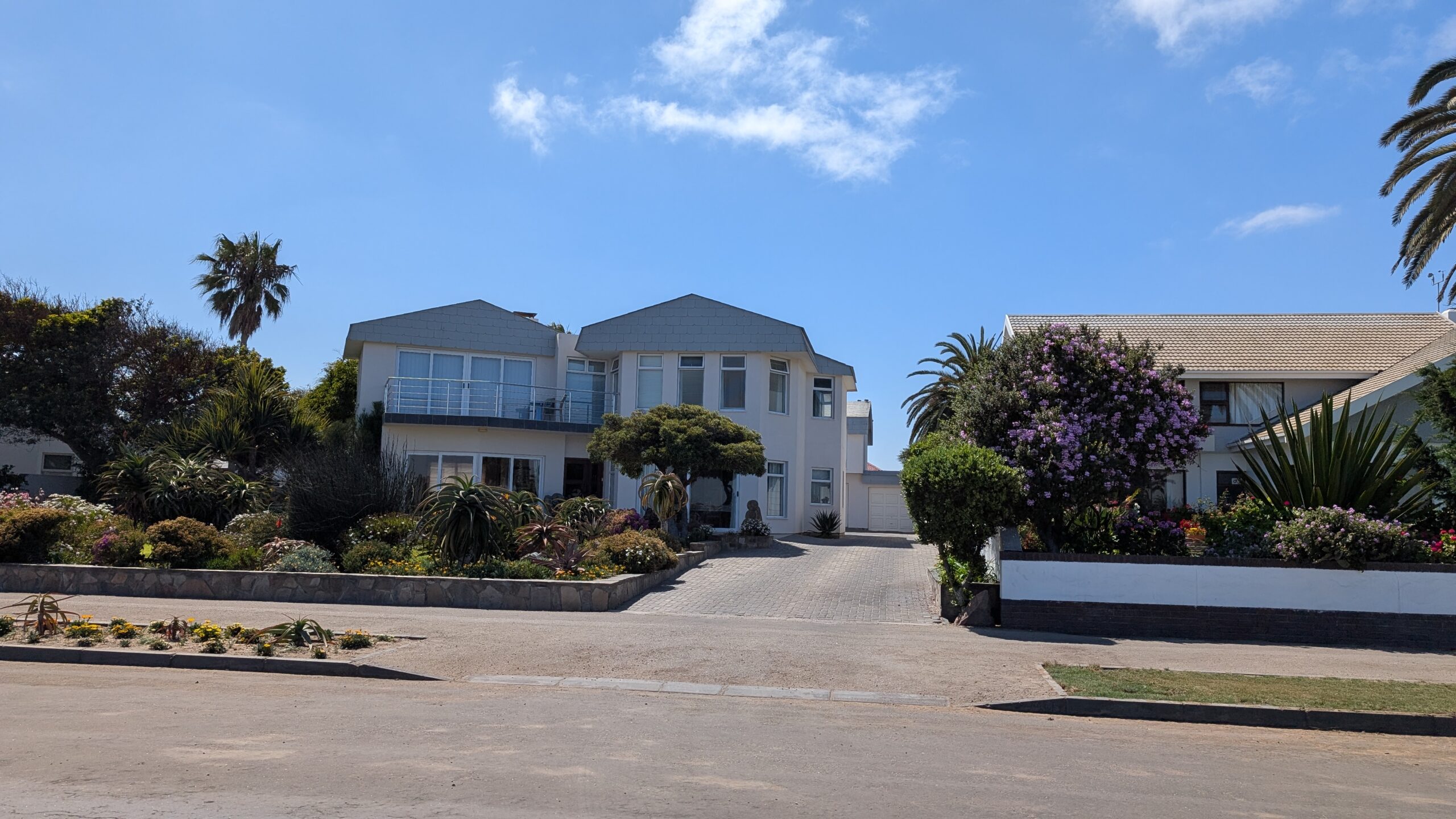

By the time we left, the sun was high, and the colors of the lagoon had shifted again. The pinks now appeared softer, blending gently into the silvery-blue horizon. The flamingos were still feeding, still wading, still performing their ancient ritual as they have done here for generations. It’s easy to see why Walvis Bay is often called one of Namibia’s most picturesque coastal spots. The flamingos lend it a kind of magic, transforming a simple saltwater lagoon into a masterpiece of living color.
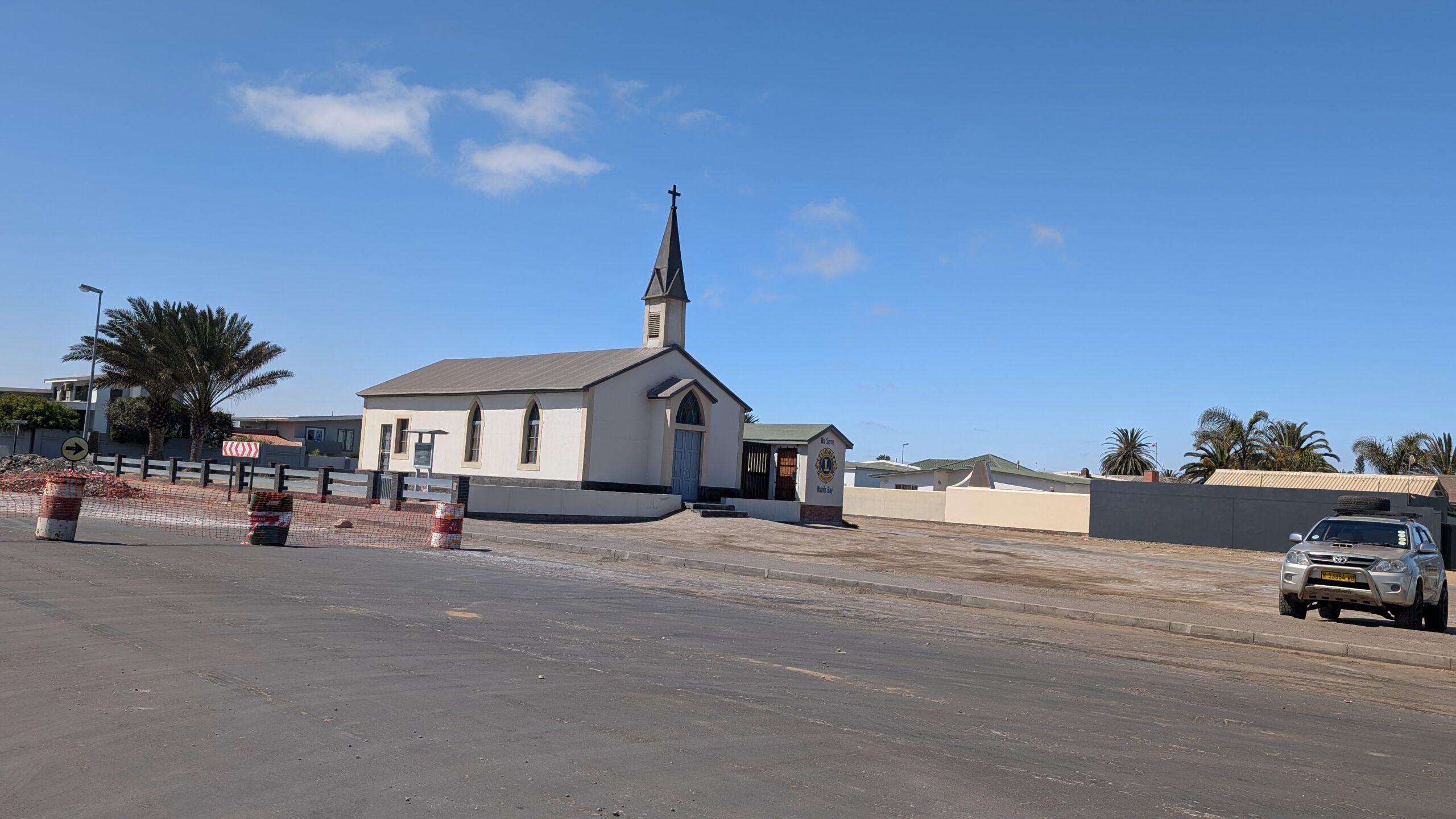
As we drove away, I looked back one last time. The flamingos were still there, their slender forms shimmering in the heat, and I knew the image would stay with me long after we’d gone, one of those rare travel moments that imprints itself deeply in memory, a reminder of nature’s grace and the quiet joy found in simply watching the world unfold.
Tomorrow, we’ll be in Cape Town for almost two days, with an exciting event we’ll share soon about Friday!
Be well,
Photo from ten years ago today, November 12, 2015:
 |
| A mooring spot for the locals in Savusavu, Fiji. For more photos, please click here. |

